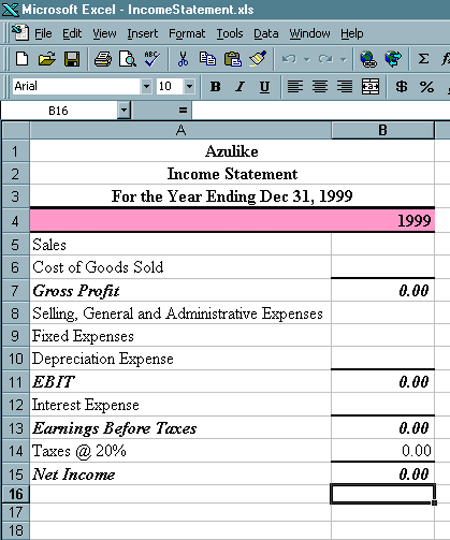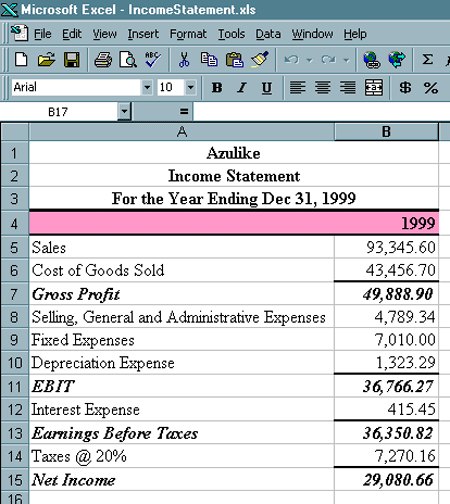
Developing an Income Statement Using a Macro
|
Some Background. In the previous webpage we started to work with macros. The example was largely trivial so that you could focus on the issues associated with creating, cleaning and using macros. Now I want to develop something more useful that will give you more insight into how a macro might be used in practice. Consider a new cleaning service called Azulike. They have been in business for a little over a year and they want to create a computerized approach for developing their Income Statement. Whether you know it or not the major things an income statement should include are the following.
Recording the Macro. Now you want to mimic the following steps in order to develop a macro that will format a spreadsheet and set up the cell formulas so that Azulike can more easily develop their income statement for each year.
You should now be able to open a new workbook and press Ctrl+i and you will get a template like the following. At times this may prove to be cumbersome, but you can override this name in any given workbook. You just can't use the same shortcut key when saving to your Personal Macro Workbook. |

Entering Numbers. Now you want to move to a new sheet and work through the following steps in order to put numbers into the problem.
Now you should save the file and call it something like IncomeStatement in a separate folder for Azulike. After entering these numbers the spreadsheet should look like the following. You will augment this spreadsheet further in the homework to include percentages. |
